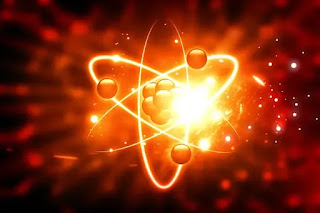Cognitive psychology is a branch of psychology that focuses on studying mental processes such as perception, attention, memory, thinking, problem-solving, language, and decision-making. It seeks to understand how people acquire, process, store, and use information from the environment, and how these cognitive processes influence behavior.
Perception: Investigating how individuals interpret and make sense of sensory information from the world around them, such as vision, hearing, touch, taste, and smell.
Attention: Understanding the mechanisms by which individuals selectively focus on certain stimuli while filtering out others, and the impact of attention on cognitive processes.
Memory: Studying the processes involved in encoding, storing, and retrieving information in short-term memory and long-term memory, as well as factors that influence memory accuracy and forgetting.
Learning: Exploring how individuals acquire knowledge and skills through various learning processes, including conditioning, observational learning, and reinforcement.
Thinking and Problem-Solving: Investigating the cognitive processes involved in reasoning, decision-making, critical thinking, and problem-solving, and how individuals approach and solve complex tasks.
Language: Understanding how language is acquired, processed, and used in communication, including the study of linguistic development, comprehension, and production.
Cognitive Development: Examining how cognitive abilities and processes evolve throughout the lifespan, from infancy to old age.
Cognitive Neuroscience: The interdisciplinary field that combines cognitive psychology with neuroscience to study the neural basis of cognitive processes and the brain regions involved in mental functions.
Cognitive Biases: Identifying and understanding the systematic errors and biases that influence human decision-making and judgments.
Attention Disorders and Cognitive Impairments: Investigating cognitive deficits in conditions such as attention-deficit/hyperactivity disorder (ADHD), Alzheimer's disease, and other neurological disorders.
Cognitive Models and Theories: Development and evaluation of theoretical frameworks that explain cognitive processes and behaviors.
Artificial Intelligence and Cognitive Psychology: Exploring the intersection of cognitive psychology with artificial intelligence and how AI systems can simulate human cognitive functions.
Cognitive Load: Investigating how the amount of information presented to individuals affects their cognitive processing and performance on various tasks.
Problem-solving Heuristics: Examining the mental shortcuts and strategies people use to solve problems and make decisions.
Cognitive Development in Children: Studying the cognitive changes and milestones that occur during childhood, including language acquisition, theory of mind, and cognitive abilities.
Working Memory: Understanding the capacity and functions of working memory, which plays a crucial role in temporarily holding and manipulating information during cognitive tasks.
Embodied Cognition: Exploring the idea that cognitive processes are influenced by the body's interactions with the environment and the sensory-motor experiences.
Metacognition: Investigating individuals' awareness and understanding of their cognitive processes, including self-monitoring, self-regulation, and metacognitive strategies.
Emotion and Cognition: Examining the interaction between emotions and cognitive processes, and how emotions can influence decision-making and memory.
Attentional Disorders and ADHD: Researching the cognitive aspects and attentional deficits associated with attention-deficit/hyperactivity disorder (ADHD) and related conditions.
Cognitive Rehabilitation: Developing interventions and strategies to improve cognitive functioning in individuals with cognitive impairments due to brain injuries or neurological conditions.
Neural Plasticity: Understanding the brain's ability to reorganize and adapt through experience and learning, and how it relates to cognitive development and recovery from brain injuries.
Language Processing Disorders: Studying language impairments, such as aphasia, and their effects on language comprehension and production.
Cognitive Aging: Investigating how cognitive processes change with age and exploring factors that can help maintain cognitive function in older adults.
Cognitive Assessment: Developing and utilizing various tests and measures to assess cognitive abilities and identify cognitive strengths and weaknesses.
Dual-Process Theory: Exploring the idea that human decision-making and judgment involve two cognitive processes - the intuitive, automatic system, and the analytical, deliberate system.
Cognitive Neuropsychology: Studying individuals with brain damage or neurological disorders to gain insights into the neural basis of cognitive functions.
Cognitive psychology continues to be an active and dynamic field of research, providing valuable insights into how the human mind works and how cognitive processes shape behavior, learning, problem-solving, and decision-making. Researchers in cognitive psychology use a combination of experimental methods, neuropsychological studies, brain imaging techniques, and computational modeling to advance our understanding of the complex workings of the human mind.
#CognitivePsychology #Perception #Attention #Memory #Learning #Thinking #ProblemSolving #Language #CognitiveDevelopment #CognitiveNeuroscience #CognitiveBiases #AttentionDisorders #CognitiveImpairments #CognitiveModels #ArtificialIntelligence #CognitiveLoad #ProblemSolvingHeuristics #CognitiveDevelopmentInChildren #WorkingMemory #EmbodiedCognition #Metacognition #EmotionAndCognition #AttentionalDisorders #ADHD #CognitiveRehabilitation #NeuralPlasticity #LanguageProcessingDisorders #CognitiveAging #CognitiveAssessment #DualProcessTheory #CognitiveNeuropsychology #CognitiveProcesses #CognitiveFunction #CognitiveSkills #CognitiveAbilities #CognitiveBehavior #CognitiveTasks #CognitiveExperiments #CognitiveResearch #CognitiveScience #CognitiveStudies #CognitiveInsights #CognitiveLearning #CognitiveFunctioning #CognitiveHealth #CognitiveAbilities #CognitiveDisorders #CognitiveAnalysis #CognitiveInfluences #CognitiveImpact #CognitiveInterventions

















